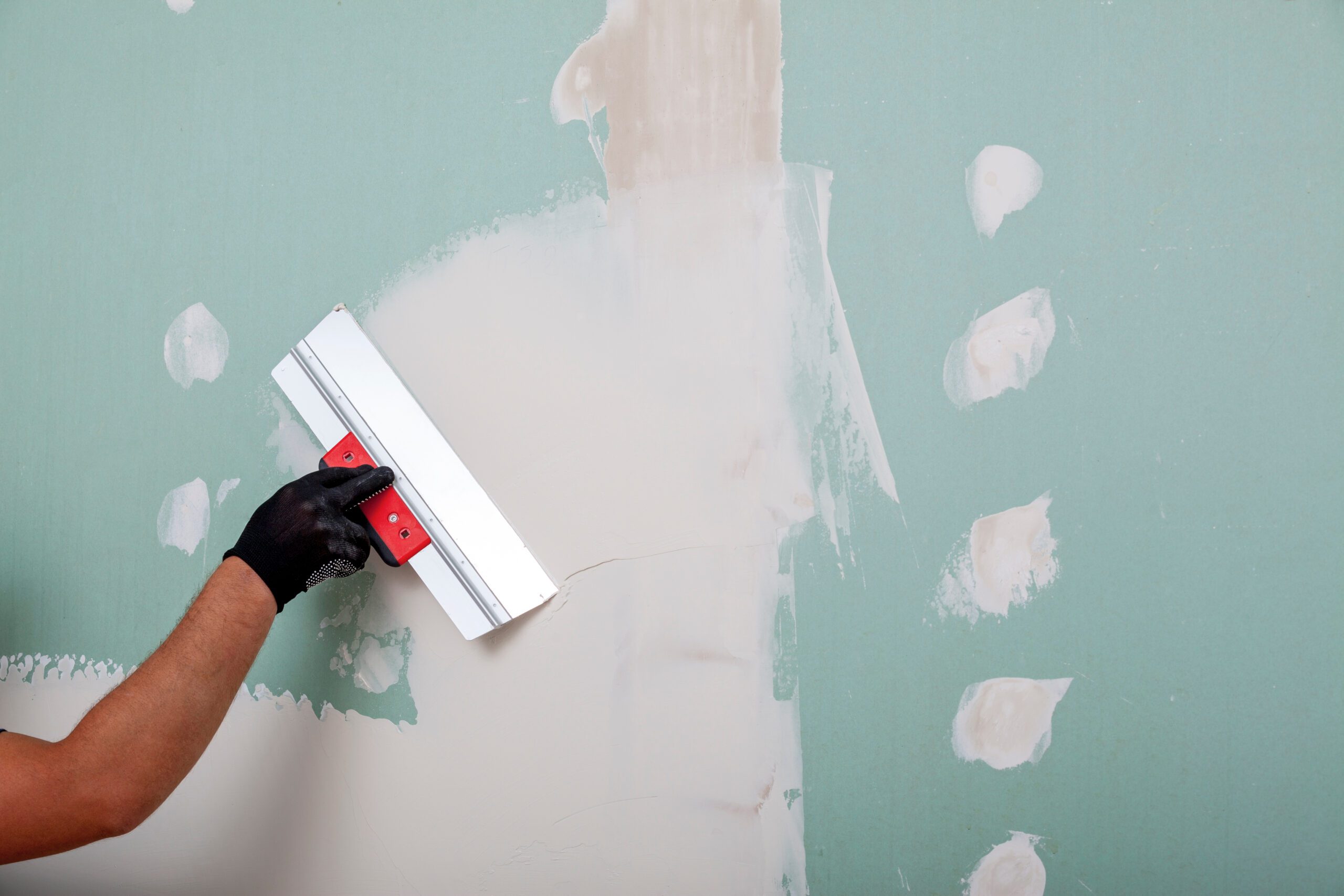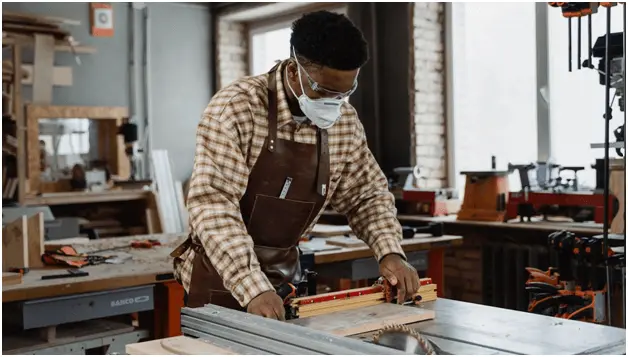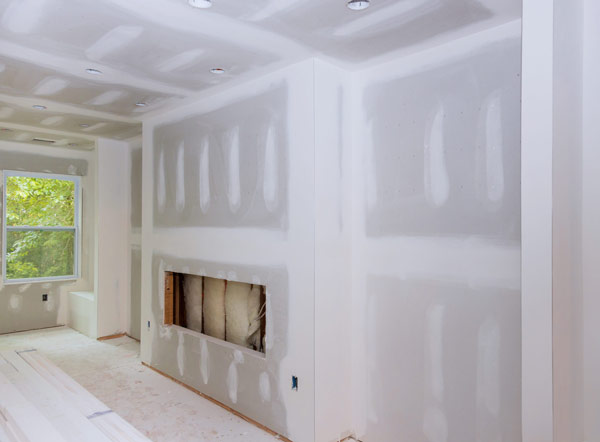Discover the very best Practices for Successful Drywall Repair and Installment
The art of drywall repair service and installation calls for a blend of skill and precision. Mastering the vital devices is crucial for achieving a seamless surface. Understanding the detailed process can make a significant distinction in the final result. Proper strategies for taping and mudding are additionally vital. What stays is the expertise of upkeep that ensures durability. These aspects together produce a refined outcome worth exploring further.

Essential Devices for Drywall Repair Work and Installment
When taking on drywall repair service and installation, having the right tools can considerably improve the effectiveness and top quality of the work. An utility knife is important for reducing drywall sheets specifically, while a drywall saw can aid in making extra detailed cuts. Taping knives, readily available in different sizes, are crucial for using joint compound efficiently and evenly. A drywall sander, ideally with a dirt collection function, aids achieve a refined coating, decreasing the demand for considerable cleanup.
Furthermore, a gauging tape guarantees precise measurements, and a level makes sure that installments are straight and plumb. Security gear, including dust masks and goggles, need to not be forgotten to shield versus debris and dirt. Lastly, a stud finder aids in situating framing members, ensuring safe and secure installation. By furnishing oneself with these essential devices, the repair work and setup process ends up being a lot more convenient and causes a professional-quality outcome.

Step-by-Step Overview to Patching Holes
Covering openings in drywall calls for a methodical strategy to assure a seamless fixing. The area around the opening should be cleansed and any type of loose particles eliminated. For small openings, a putty knife can be utilized to apply a light-weight spackle, pressing it right into the hole and smoothing the surface. After it dries, sanding is necessary to create a level coating. For larger holes, a spot of drywall may be needed. This includes reducing a piece of drywall a little larger than the opening, safeguarding it to the wall with screws, and making use of joint compound to cover the seams. As soon as the compound dries, it needs to be sanded smooth. Keying the patched area before painting will ensure an also coating. Complying with these actions will cause a professional-looking fixing that blends effortlessly with the surrounding wall surface.
Methods for Seamless Drywall Installation
Attaining seamless drywall installation needs mindful planning and execution. It is important to reduce and gauge drywall sheets accurately to lessen voids. Making use of an utility blade, installers must rack up the board prior to breaking it along the cut line, guaranteeing clean edges. Correctly straightening the sheets is important; starting from the top and working down helps maintain uniformity.
Attaching drywall to the studs calls for consistent spacing, commonly every 16 inches, utilizing screws as opposed to nails for much better hold. This method lowers the risk of stands out in time. Furthermore, startling the seams in between sheets enhances structural honesty and minimizes the exposure of joints.
Lastly, utilizing the right thickness of drywall for particular areas-- such as moisture-resistant enters restrooms-- additional adds to a perfect surface. Complying with these methods will certainly result in a professional-looking and smooth installation, establishing the phase for the succeeding finishing processes.
Finishing Touches: Insulation and Mudding
Ending up touches, such as taping and mudding, play an important duty in attaining a refined drywall surface area. Insulation includes applying a slim strip of drywall tape over the joints and seams, guaranteeing a smooth appearance. This process helps prevent cracks and creates a strong bond in between drywall sheets. It is important to pick the ideal type of tape, with paper and fiberglass fit together being the most typical choices.
Mudding, or using joint compound, adheres to taping. This substance fills in spaces and smooths out the surface area for an uniform surface. It is normally applied in several layers, with each layer needing to completely dry before fining sand. Appropriate strategy involves feathering the edges to blend the compound right into the surrounding drywall, minimizing exposure.
When completed properly, taping and mudding improve both the visual and structural integrity of the drywall setup, resulting in a professional-quality surface.
Tips for Keeping Your Drywall After Installation

In addition, keeping a constant interior moisture level can avoid bending or mold development. Utilizing a dehumidifier in damp locations, like basements, is recommended. It's also advantageous to occasionally repaint areas that show wear, as this protects the underlying product. When relocating furnishings or installing components, caution needs to be visit site exercised to stay clear of damaging the drywall. By adhering to these maintenance pointers, property owners can expand the life of their drywall, protecting it continues to be an appealing attribute of their interiors.
Often Asked Concerns
What Safety And Security Equipment Is Essential for Drywall Fixing and Installation?
For drywall repair work and installation, vital safety and security gear includes security goggles to protect eyes, dirt masks to protect against inhalation of particles, gloves for hand protection, and knee pads for comfort during long term kneeling. Drywall Repair Ogden UT.
Exactly how Do I Figure Out the Drywall Density Needed for My Job?
To figure out the drywall density required for a job, one must think about the wall's architectural requirements, neighborhood building codes, and the intended use the area, commonly going with 5/8-inch or 1/2-inch drywall.
Can I Fix Drywall Without Removing Furnishings From the Space?
Yes, drywall can be repaired without eliminating furniture from the room. Careful preparation and safety procedures can reduce mess, permitting reliable fixings while maintaining surrounding things secure from dust and damage throughout the procedure.
What Kinds of Drywall Are Best for Different Environments?
Moisture-resistant drywall is suitable for restrooms and kitchen areas, while soundproof drywall fits shared walls in houses. Fire-rated drywall is best for garages, and conventional drywall functions well in basic living areas, ensuring longevity and suitability for numerous settings.
Just how Lengthy Does It Consider Drywall Mud to Dry Totally?
Drywall mud usually takes 24 to 48 hours to completely dry entirely, relying on elements like humidity and temperature (Interior Painting). Thicker applications may need longer drying times, while thinner layers can dry out a lot more quickly. Appropriate ventilation aids drying
The art of drywall repair and installation Visit Website requires a blend of ability and accuracy. When taking on drywall fixing and setup, having the right tools can substantially enhance the performance and high quality of the job. An energy blade is crucial for cutting drywall sheets specifically, while a drywall saw can aid in making a lot more elaborate cuts. Attaining seamless drywall setup needs careful preparation and implementation. Moisture-resistant drywall is optimal for shower rooms and kitchen areas, while soundproof drywall suits shared wall Visit This Link surfaces in houses.